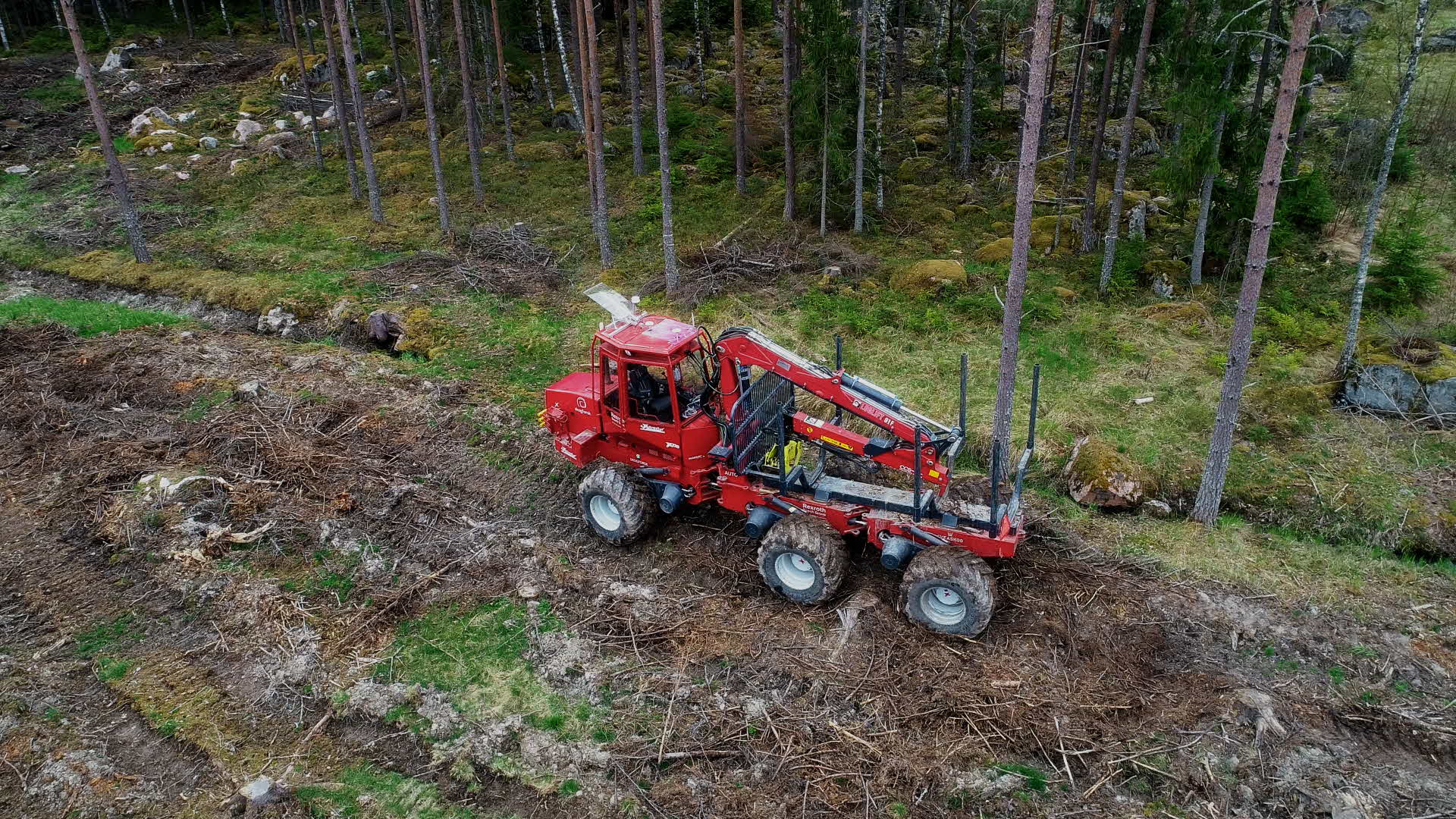
5G-equipped drone remotely controls forest machine
- News
- Forest
With the help of a drone equipped with its own portable mobile base station, a forest machine has, for the first time, been remotely controlled via 5G in an area with limited connectivity. The test was carried out in a forest outside Västerås, central Sweden, as part of a research project involving Mittuniversitetet, Telia, Ericsson, Skogforsk, SCA, Volvo CE and Biometria, co-funded by Vinnova and the program for Advanced Digitalization.
The project aims to investigate how drone technology and 5G technology could enable remote areas around Sweden to be worked with remote-controlled vehicles.
The project group passed a milestone in November 2021 when it was able to remotely control a timber loader at SCA’s Torsboda timber terminal outside Timrå in northern Sweden. After this success, the group set itself the challenge of using a drone equipped with its own portable mobile base station to extend 5G network coverage to an area where there would otherwise be none and to use that temporary connectivity to enable a forest machine to be remotely controlled.

Creates new opportunities
At the beginning of May, successful tests were carried out in a forest in Virsbo outside Västerås.
“We can now establish that it is possible to connect and remotely control large vehicles via a drone, which in practice acts as a base station in the mobile network. This creates completely new and flexible opportunities to connect businesses that work in areas with insufficient network coverage. Apart from the forestry and agricultural industry, the technology can be used in disaster areas if normal mobile coverage is completely knocked out,” says Magnus Leonhardt, Head of Strategy and Innovation for Telia Sweden’s B2B business.
After a basic technical briefing, the forest machine, a forwarder, was transported to a clear-cutting site where it was connected using 5G technology mounted on a drone. During the test, the drone was approximately 500 meters from the forest machine but created a coverage area extending up to 3 kilometers. The driver of the forestry machine was in Skogforsk’s remote control lab in Uppsala, roughly 90 kilometers away.
“The test verifies the hypothesis that it is possible to improve coverage in areas where we currently experience significant gaps and where mast deployment is slow or not commercially viable,” says Magnus Bergman, Head of Technology and Digitalization at SCA Skog.
Important for SCA
For SCA, testing and developing this technology are crucial and something they have requested in dialogue with Telia.
“We need to find out how we can improve local coverage in areas where we currently don’t have access to existing networks. The ongoing shutdown of 2G and 3G networks makes this development even more important,” emphasizes Magnus. The demand for secure communication to and from forestry machines with accurate positioning has steadily increased over time, and we are moving more towards real-time data. Since we constantly move forestry machines, a mobile solution to enhance coverage is a good approach.
In the test conducted in Västerås, they chose to remotely control a forwarder to test the connection via a drone.
“In the next step, we want to test connecting and remotely controlling a soil scarification machine, which is a much heavier machine that operates in inaccessible terrain. The goal for us is to improve the working environment for the drivers, and soil scarification drivers, in particular, operate in a very tough environment.” Says Petrus Jonsson, a researcher and deputy program manager at Skogforsk, who participated in the test.
“Testing remote control via 5G is a crucial step in the development of new machine systems and to drive the next stage of technological advancement within Swedish forestry,” says Magnus Bergman."
Mid Sweden University’s researchers are studying the latency and reliability in data communication, which is very important when remotely controlling machinery, as Professor Mattias O’Nils explains.
“We have collected data from the test with the drone and will now analyze and evaluate the results,” O’Nils says. “We will also do comparative studies with other types of connections such as Wi-Fi-based networks and explore further possibilities with 5G.”
Photo: Mid Sweden University